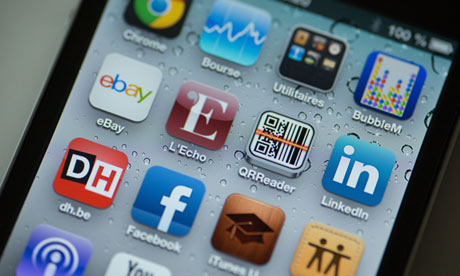New Technology 2013


What new technology will we see in 2013?
With the new year almost upon us, we’ll be taking a look at some of the most innovative technology and gadgets that we can expect to see in 2013. Some you will no doubt have heard about already, and some you’ll never have thought possible! This is part one.Google Smart-Glasses
 Google revealed that “Project Glass,”
which takes all the functionality of a smartphone and places it into
wearable eyeglasses, is something that a small team of their engineers
have been working on for over two years now. The clear lens could
display anything from text messages and reminders, to video charts and
maps with turn-by-turn directions. They may also be capable of taking
photos and recording videos; all through simple voice commands,
according to the concept Google released earlier this year.
Google revealed that “Project Glass,”
which takes all the functionality of a smartphone and places it into
wearable eyeglasses, is something that a small team of their engineers
have been working on for over two years now. The clear lens could
display anything from text messages and reminders, to video charts and
maps with turn-by-turn directions. They may also be capable of taking
photos and recording videos; all through simple voice commands,
according to the concept Google released earlier this year. Although the finished product is still some way off, it’s believed that we may see it on shelves sometime in Q4 of 2013.
3D Printing In 2013
 Okay,
so 3D printing is something that is already possible, but those
printers are currently commercial-only solutions with the absolute
cheapest coming in at a little over $10,000.
Okay,
so 3D printing is something that is already possible, but those
printers are currently commercial-only solutions with the absolute
cheapest coming in at a little over $10,000.In late 2013, we can expect the technology to significantly drop in price to the point where it will enter the consumer market.
So how does it work? The material is gradually deposited through a controlled nozzle, layer by layer, building up to a fully formed product, made of plastic or metal. Imagine being able to draw a case for your phone in Photoshop then printing out!
Leap Motion
Leap Motion lets you interact with your computer in a completely new way. Natural hand movements, instantly interpreted with an unprecedented accuracy of 1/100 of a millimeter, for a mere $70. The Leap Motion is without a doubt one of the most phenomenal products due to be released in 2013, we can’t even begin to describe how excited we are about it.
As far as new technology goes, this is about as cutting-edge as it gets for home electronics at the moment. It’s essentially a USB peripheral device about the same size as an smartphone that creates a 3-Dimensional interaction space of 8 cubic feet to precisely interact with and control software on your laptop or desktop computer. It’s so accurate that it’s able to sense individual hand and finger movements independently, as well as small items such as a pen.
200x more sensitive than existing touch-free technologies, like Microsoft’s Kinect, it’s the difference between sensing an arm or hand movement and interpreting an incredibly accurate fingertip or pen movement.
Currently available for pre-order at LeapMotion.com for $69.99, but wont ship until early 2013.
Xbox 720

With Xbox 720 gossip and concepts churning around inside the rumour mill for the past couple of years now, there’s no doubt that we’re beginning to learn some real hard facts now. If the Xbox 720, if that’s what it is to be called, is to be launched in the run up to Christmas 2013, an official announcement from Microsoft can’t be far away.
So what can we expect from the 360′s successor?
A 56-page document leaked from within Microsoft in June indicates that the new console will feature 1080p 3D support, Blu-ray player and DVR functionaly, which would suggest that Microsoft is trying to position the console as a single all-in-one set-top box for your living room.
Speaking specs, it is said that the machine will have two independent GPUs, and a CPU with four or six cores, one for Kinect, the other for the operating system.
We will also see new anti-piracy measures with an always-on internet connection. Microsoft neither confirms or denies this. Time will surely tell, but it’s looking like it will become one of the most successful pieces of new technology in 2013, especially if Sony are unable to release their PS4 in time for the winter festivities.
OCZ NIA 2 – Neural Impulse Actuator

OCZ have confirmed that they will be manufacturing a successor to their Neural Impulse Actuator (NIA) in 2013. So what exactly is an NIA anyway? It’s actually an incredible piece of kit. Wearing the comfortable headband, users are able to control PC Games without even touching the keyboard which reduces reaction times by up to 60%.
The commands are very easily assigned and calibrated based on the user’s physiology. The result; gamers are able to jump, run and fire much more quickly the ever before, without even lifting a finger.
Essentially it works by converting EEG (brainwaves) signals into keystrokes. As it is configured using the supplied software, it can be used in almost any scenario where a keyboard would be used.
Sound good? It’s already being sold by many online retailers such as Play.com and Amazon, although it may be worth holing out until the NIA 2 is released.













